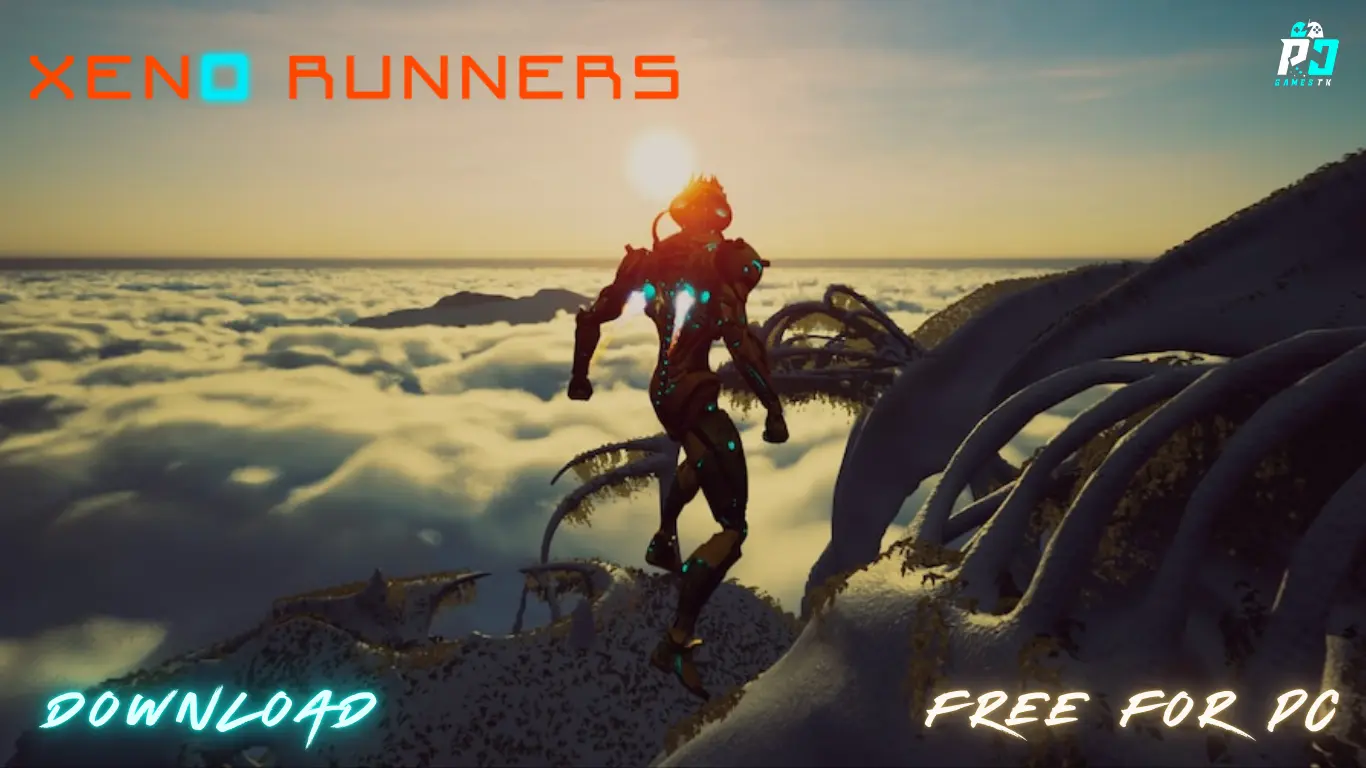Bloodborne, the gothic action-RPG masterpiece from FromSoftware, has long been a console exclusive that left PC gamers begging for access. With no official PC port in sight, fans have turned to reliable workarounds — and today, we’re giving you exactly what you need: a verified, step-by-step PC download Bloodborne guide. This includes a safe, direct link, a high-performance emulator setup, and pro tips for a smooth gameplay experience.
In this definitive walkthrough, you’ll learn how to download Bloodborne, install it safely using an emulator, and optimize it to run beautifully on your system, even with a controller. Let’s bring Yharnam to your desktop.
What Is Bloodborne? FromSoftware’s Gothic Masterpiece
Released in 2015 exclusively for PlayStation 4, Bloodborne is a dark, fast-paced Soulslike that combines Lovecraftian horror, tight combat, and atmospheric world-building. Developed by FromSoftware, it’s widely regarded as one of the best action RPGs ever created.
The game follows a Hunter exploring the plague-ridden city of Yharnam, where nightmarish creatures and cosmic horror lurk behind every corner of its haunting Gothic streets. Unlike other Souls games, Bloodborne emphasizes aggressive combat over defensive strategies, rewarding players who stay on the offensive. Its unique “Rally” system allows players to regain health by attacking enemies immediately after taking damage, creating a risk-reward dynamic that defines the entire experience.
For PC gamers familiar with Dark Souls or Elden Ring, Bloodborne offers a distinctly different flavor of FromSoftware’s design philosophy, making it a must-play title for any Soulslike enthusiast.
Bloodborne System Requirements for PC
Before exploring how to play or download Bloodborne on PC, it’s essential to understand the system requirements for optimal performance. To do that, we’ll use the RPCS3 emulator — the most advanced and reliable PS3 emulator out there. While Bloodborne is a PS4 title, it can be emulated on RPCS3 through a custom build that fans have optimized for optimal performance.
Minimum PC Requirements for Bloodborne:
| Processor | Intel i5-8400 / AMD Ryzen 5 2600 |
| Memory | 4GB RAM |
| GPU | GTX 1060 6GB / RX 580 8GB |
| Storage | 30GB HDD |
| Controller | DualShock 4, Xbox controller, or compatible gamepad |
| Operating System | Windows 10 (64-bit)/11, or Chrome OS |
Recommended PC Specifications:
| Processor | Intel i7-9700K / Ryzen 7 3700X |
| Memory | 8GB RAM |
| GPU | RTX 3060 / RX 6700 XT |
| Storage | 40GB SSD |
| Controller | DualShock 4, Xbox controller, or compatible gamepad |
| Operating System | Windows 10 (64-bit)/11, or Chrome OS |
⚠️ Note: Bloodborne is a graphically demanding game, even when running on emulators like RPCS3. For best performance, a modern CPU with strong single-thread performance is recommended.
How to Download Bloodborne on PC (Step-by-Step Guide)
- Click the “Download Setup” button to download Bloodborne.
- Save the password and copy the link.
- Open it in a new tab and download the compressed file.
- Extract the downloaded archive using WinRAR or 7-Zip.
- Launch RPCS3.exe and follow the prompts to install firmware.
- Go to File > Install Firmware and select the included .pup file.
- Once firmware is installed, drag and drop the Bloodborne.pkg into the RPCS3 window.
- Right-click the game, select Boot.
- Configure settings (explained below) for best performance.
💡 Tip: Always run the emulator as an administrator to avoid access issues.
Bloodborne PC Emulator Setup: RPCS3 Config & Performance Tips
Here are the best settings for stable performance and smooth gameplay:
CPU Settings:
- SPU Decoder: Recompiler (LLVM)
- SPU Block Size: Safe
- Preferred SPU Threads: Auto
GPU Settings:
- Renderer: Vulkan
- Resolution Scale: 150% (for 1080p+)
- Framerate limit: 30fps (Bloodborne’s original frame cap)
Advanced Tips:
- Enable Write Color Buffers
- Disable Strict Rendering Mode
- Use asynchronous shader compilation
Input Lag Reduction Techniques
Hardware Solutions:
- Use USB connections over Bluetooth when possible
- Invest in low-latency gaming controllers
- Ensure controller drivers are updated
- Consider a wired internet for consistent input response
Software Optimization:
- Close unnecessary background applications
- Use Game Mode on Windows 10/11
- Disable Windows mouse acceleration
Troubleshooting: Fixing Emulator Lag, Errors & Black Screens
🔧 Common Issues & Fixes
Lag / FPS Drops
- Lower resolution scale (try 100%)
- Disable Write Color Buffers
- Use Vulkan renderer instead of OpenGL
- Enable shader pre-caching
Black Screen on Boot
- Update graphics drivers
- Reinstall firmware (verify exact file path)
- Ensure Bloodborne.pkg is compatible
No Audio or Crackling Sound
- Use Audio Stretching
- Set audio backend to XAudio2 in RPCS3
- Check Windows audio sample rate (set to 48000 Hz)
Input Lag / Controller Delay
- Use a wired controller
- Disable VSync
- Match the frame limit with your monitor’s refresh rate
- Disable Windows Game Mode and Game Bar
RPCS3 Crashing
- Run RPCS3 as an administrator
- Close background apps like MSI Afterburner, Razer Synapse
- Delete corrupted shader or cache folders
Stuck on Compile Shaders
- Allow RPCS3 to finish shader compilation
- Restart RPCS3 after the first boot
Game Not Showing in Emulator
- Ensure .pkg is properly installed
- Restart RPCS3 after installation
🌐 Connection Problems
“Unable to Connect to PlayStation Network”
Basic Solutions:
- Test the internet with speed test tools
- Check PSN status at status.playstation.com
- Power cycle your modem/router
- Test via mobile hotspot
Advanced Fixes:
- Flush DNS cache (ipconfig /flushdns)
- Switch to Google DNS: 8.8.8.8, 8.8.4.4 or Cloudflare 1.1.1.1
- Temporarily disable Windows Firewall
- Update router firmware and check for gaming mode
- Port forwarding: Open TCP/UDP ports 80, 443, 3478–3480
Frequent Disconnections & Stability Issues
Network Diagnostics:
- Ping test: ping 8.8.8.8 -t
- Use WinMTR for packet loss analysis
- Monitor bandwidth via Task Manager
Router Optimization:
- Enable QoS and prioritize gaming traffic
- Use 5GHz Wi-Fi or Ethernet
- Place the router away from interference
- Reset router or update firmware
ISP-Specific Fixes:
- Contact ISP for low-latency gaming plans
- Request a static IP
- Switch ISPs if persistent issues
⚙️ Performance Optimization
Input Lag (Advanced Fixes)
- Use Cat6 (or better) Ethernet cable
- Enable the router’s “Game Mode”
- Close launchers like Steam/Epic
- Set Windows power plan to High Performance
- Disable automatic Windows Updates during gameplay
Browser-Specific Tips
- Use Chrome or Edge for PS+ Cloud Gaming
- Clear browser cache/cookies
- Disable unnecessary browser extensions
- Enable hardware acceleration
- Use incognito mode
🎮 Controller Issues
Controller Connection Fixes
DualShock 4:
- Use DS4Windows for compatibility
- Update via PlayStation Accessories App
- Reset the controller using the back pinhole
- Try different USB ports (USB 3.0 preferred)
Xbox Controller:
- Use the Xbox Accessories App for firmware
- Prefer official Wireless Adapter over Bluetooth
- Reinstall drivers from Device Manager
Controller Calibration & Response
- Calibrate in joy.cpl
- Adjust deadzone settings
- Disable Steam Input
- Avoid interference from nearby devices
- Use USB 2.0 if USB 3.0 causes issues
🎥 Visual & Audio Quality Fixes
PC Graphics Optimization
- Update graphics drivers
- Disable Windows display scaling (set to 100%)
- Use the monitor’s native resolution
- Disable unnecessary apps/screensavers
Advanced Visual Fixes
- Check the HDMI/DisplayPort cable
- Disable Windows HDR if colors are off
- Match monitor refresh rate with in-game settings
- Use a dedicated GPU if available
🔊 Audio Desync & Sound Fixes
Basic Audio Fixes
- Use wired headphones
- Check and set the correct sample rate (48000 Hz)
- Disable audio enhancements in Windows
Advanced Audio Solutions
- Update Realtek or other audio drivers
- Disable “exclusive mode” in audio settings
- Use ASIO drivers if applicable
- Test alternate output devices
🧩 Software-Specific Issues
Chrome/Edge Problems
Performance Optimization:
- Go to chrome://flags → Enable Hardware Acceleration
- Disable background apps
- Clear browsing data
- Set process priority to High in Task Manager
Advanced Chrome Tweaks:
- Add-max_old_space_size=8192 in the shortcut for RAM allocation
PlayStation Plus App Problems
Installation & Updates:
- Run the app as an admin
- Clear app cache
- Try Compatibility Mode (for older OS)
Login Problems:
- Clear saved credentials
- Disable antivirus temporarily
- Check Windows date/time
- Try logging in from a different network


